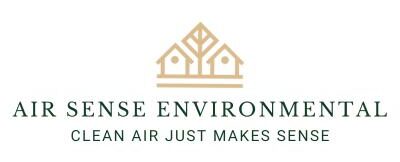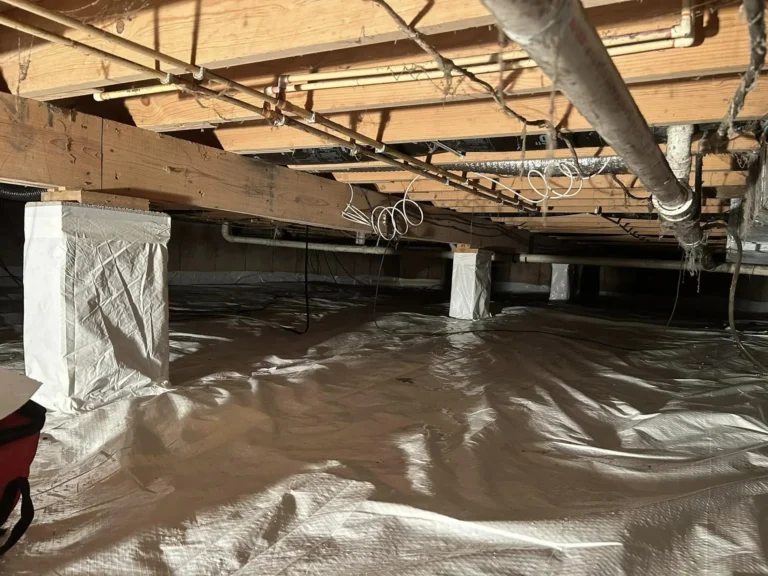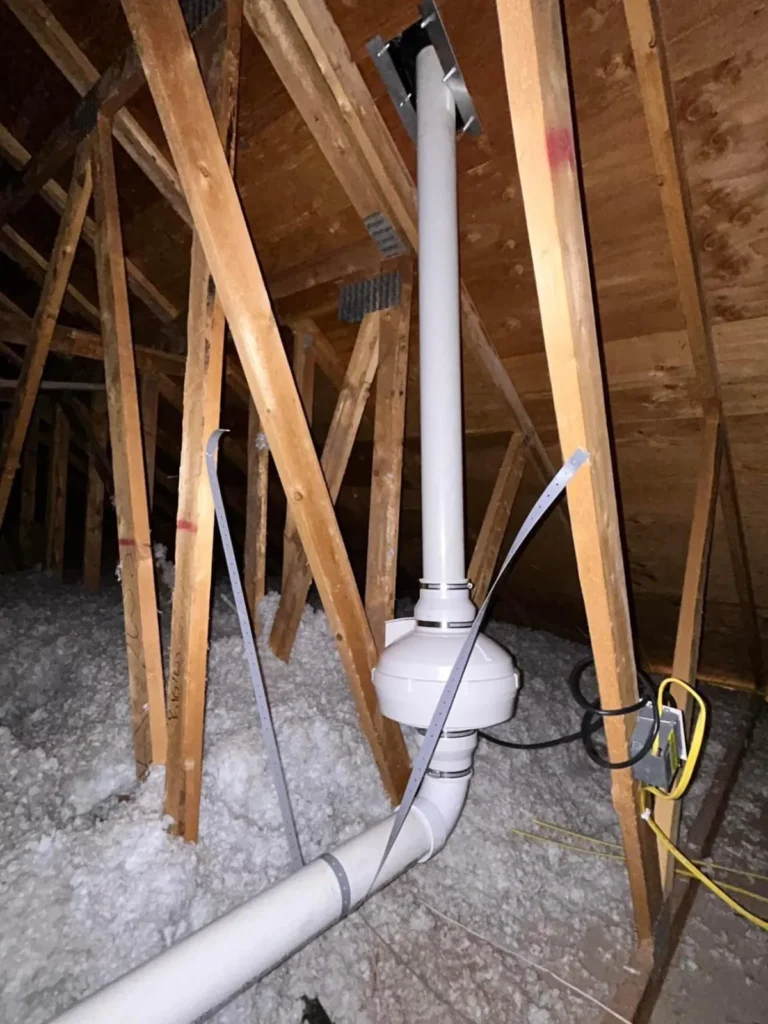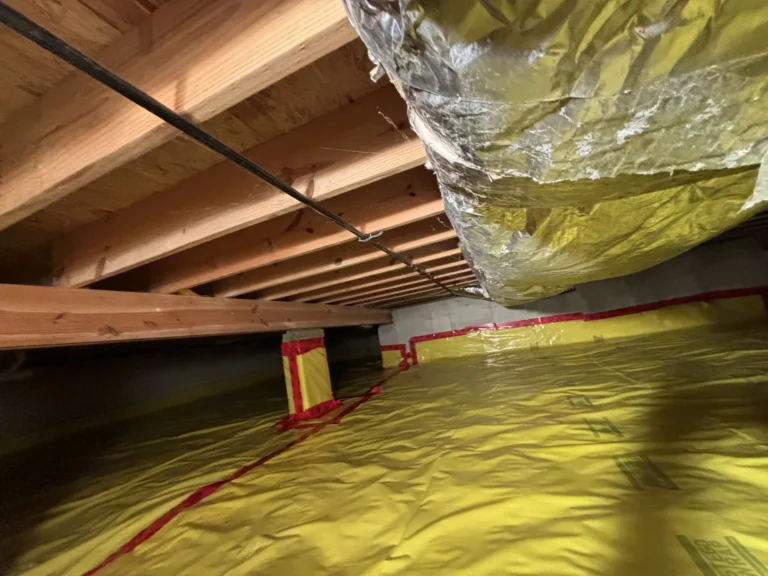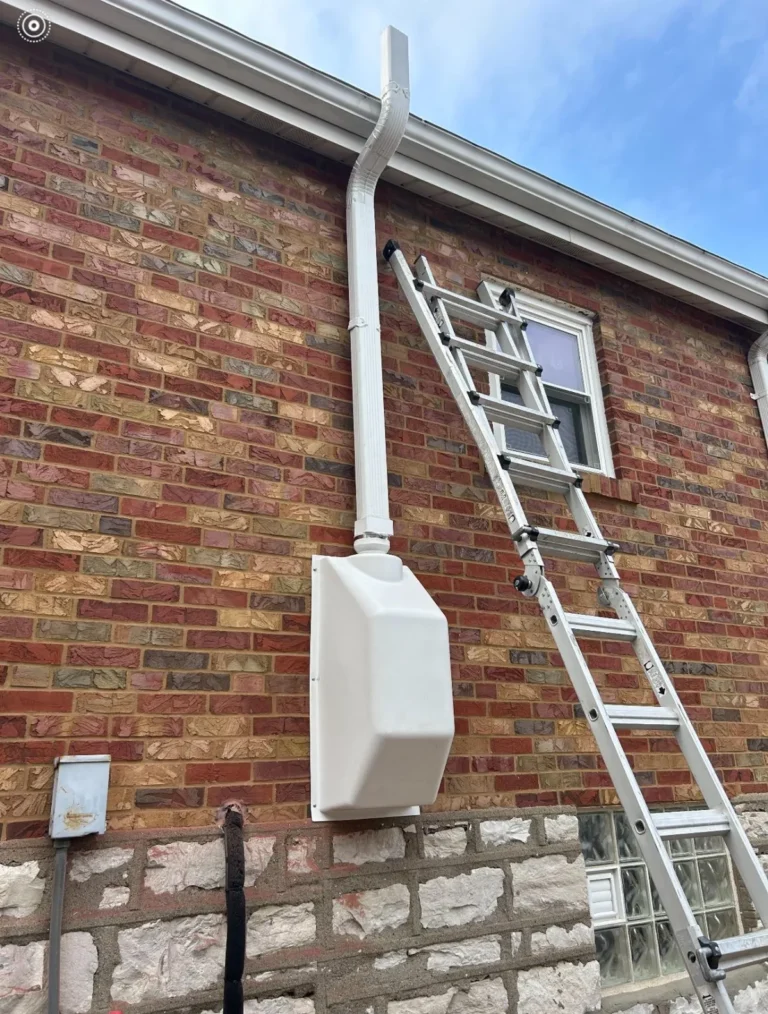While many household dangers are easy to spot, one of the most harmful threats often goes completely unnoticed—lurking silently in the air we breathe. Radon, an invisible and odorless gas, poses a significant threat to families across St. Louis and particularly to children due to their developing bodies. Air Sense Environmental- Radon Mitigation & Testing recognizes the pressing need for awareness and action against radon exposure, which is often overlooked in discussions about household safety. The World Health Organization (WHO) estimates that radon is responsible for 3–14% of lung cancer cases worldwide, depending on the average concentration of radon in the air for different countries. This alarming statistic shows the importance of testing and mitigation strategies designed to protect vulnerable populations, especially children.
As parents and caregivers, being aware of radon and its associated risks is vital in creating a healthy living environment. Research shows that children may be at greater risk due to their higher inhalation rates, which increases exposure to airborne toxins. Engaging with professional services, like those offered by Air Sense Environmental, can provide families with the necessary resources to address radon concerns effectively. By prioritizing thorough testing and appropriate mitigation systems, families can safeguard their homes and promote a healthier atmosphere for their children to thrive.
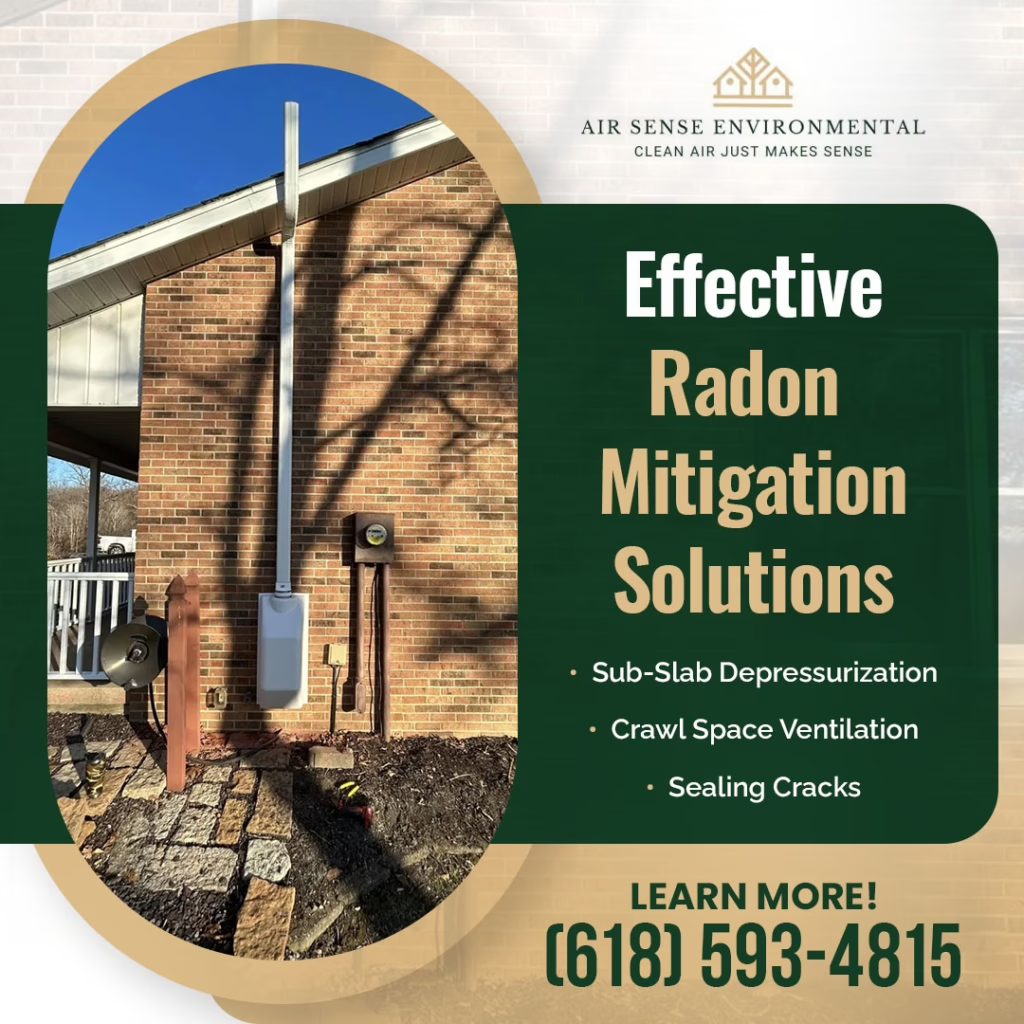
Radon Exposure: Unveiling the Hidden Danger Beneath Your Home
Radon is a hidden threat lurking beneath our feet. Formed naturally during the decay of uranium found in soil and rock, this radioactive gas is often invisible and odorless, making it undetectable without proper testing. One of the most concerning aspects of radon is its potential to accumulate in our homes, particularly in damp areas like basements and crawl spaces.
Data from various state health departments indicate that radon levels can vary greatly by region, with some areas experiencing radon levels exceeding 4 pCi/L, the EPA’s action level. The American Lung Association states that radon is found in homes across the United States, with about one in fifteen homes in the country expected to have elevated radon levels. This alarming figure highlights the importance of awareness and proactive measures.
What makes radon even more concerning is its impact on our youngest family members. Children, with their developing bodies and higher breathing rates, are especially vulnerable to the dangers of radon exposure. Being aware of this silent gas and its risks is critical for every household, especially those with children.
Children and Radon: Why Young Lungs Face Greater Risk
When we think about protecting our families, we must consider the unique risks radon poses to children. Below are the primary reasons:
1. Higher Inhalation Rates: Children breathe more frequently, meaning they inhale more air per unit of body weight than adults. This increased inhalation leads to higher exposure to contaminants.
2. Developing Lungs: Their lungs are still growing, making them more susceptible to damage from radon’s radioactive particles. Children have a greater chance of experiencing negative health effects compared to adults in the same environment. According to the ATSDR’s Clinician Brief on Radon, children may receive higher radiation doses than adults due to differences in lung development and faster respiration rates.
Additional Factors Increasing Risk
3. Longer Lifespan Ahead: Because children have many more years ahead of them, the harmful effects of radon exposure—such as lung cancer—have a longer period to develop.
4. Immature Immune System: Children’s immune systems are not fully developed, making it harder for their bodies to repair DNA damage or eliminate abnormal cells that may become cancerous.
5. Rapid Cell Growth and Division: During early development, children’s bodies experience frequent cell division. Damage to cells from radioactive particles during this critical phase can increase the risk of mutations and disease.
6. Increased Time Indoors: Young children tend to spend more time indoors, particularly at home, where radon concentrations can be highest. This extended indoor time leads to greater cumulative exposure.
7. Closer Proximity to Ground Level: Infants and toddlers often play close to the floor, where radon levels may be more concentrated due to their entry through cracks in the foundation or floors.
Radon Testing: Why It’s a Critical Step for Home Safety
Testing for radon is essential for any homeowner. The EPA advises that all homes should be tested for radon, especially those in areas known for high levels. Studies have shown that homes with elevated radon levels have a 5-10% chance of developing lung cancer over a lifetime if left unmitigated.
How to Test for Radon
- Short-Term Test Kits: These kits can be purchased at local hardware stores or online. They measure radon levels over a 2 to 7-day period.
- Long-Term Test Kits: These kits measure radon over a longer period, typically 90 days to a year, providing a more accurate picture of radon levels in your home.
- Professional Testing: Hiring a licensed professional is often the best approach, particularly if you suspect elevated radon levels. The technicians at Air Sense Environmental are trained and equipped to conduct radon testing efficiently and accurately.
Mitigating Radon Levels
If testing reveals high levels of radon, mitigation measures must be taken. The goal is to reduce radon concentrations to a safe level, ideally below 4 pCi/L, as recommended by the EPA.
Common Radon Mitigation Systems
- Sub-Slab Depressurization: This is the most commonly used method for radon mitigation. It involves the installation of a series of pipes and a fan beneath the home, which creates a vacuum effect that draws radon gas from below the foundation. By venting this gas outdoors, away from living areas, sub-slab depressurization effectively prevents radon accumulation indoors and substantially reduces health risks for occupants.
- Crawl Space Ventilation: For homes that feature crawl spaces, proper venting is essential in managing radon levels. This can involve implementing dedicated ventilation systems or installing vapor barriers that restrict moisture and gas infiltration. Effective crawl space ventilation not only helps to lower radon concentrations but also improves overall air quality by reducing humidity and preventing mold growth.
- Sealing Cracks: Sealing cracks and gaps in floors and walls is a proactive step in preventing radon entry into the home. By using caulk or other sealants, homeowners can close off potential pathways that radon may use to infiltrate living spaces. This method is particularly effective when used in conjunction with other mitigation strategies, creating an integrated approach to reducing indoor radon levels.
By implementing these measures, families can considerably decrease the risk of radon exposure in their homes.
Cost of a Radon Mitigation System: What Homeowners Need to Know
One of the most common concerns homeowners have is the cost of a radon mitigation system. The expense typically ranges from $800 to $2,500, depending on the home’s characteristics and the type of mitigation system installed. Factors affecting the cost include:
- Home Size and Layout: Larger homes may require more extensive systems, leading to increased costs.
- Existing Infrastructure: Homes with existing plumbing and ventilation options could lower costs by making installation easier.
- Geographical Location: Prices may vary based on local labor rates and the availability of services.
While the initial cost might seem significant, consider it an investment in your family’s health. The long-term benefits of reducing radon exposure far outweigh the costs, contributing to a healthier and safer home for years to come.
When Mitigation Isn’t Enough: Understanding Radon Remediation
In some cases, homeowners may find that radon levels remain elevated even after a mitigation system has been installed. While this can be concerning, it doesn’t mean the issue can’t be resolved—it simply requires further evaluation and corrective action through radon remediation.
What Is Radon Remediation?
Radon remediation refers to the process of correcting or enhancing existing radon mitigation efforts when they are not achieving the desired results. This goes beyond standard mitigation and involves a detailed inspection of the home, the current system, and any potential radon entry points that may have been missed initially.
Why Might Radon Levels Stay High?
Several factors can contribute to persistent radon levels, including:
- Improperly installed or underperforming mitigation systems
- Structural changes to the home after initial mitigation (e.g., remodeling, additions)
- New cracks in the foundation or slab that allow radon to enter
- Poor system maintenance or fan failure
- Inadequate sealing or ventilation in crawl spaces or sump pits
What Does Radon Remediation Involve?
At Air Sense Environmental, our radon remediation process includes:
- System Evaluation: We inspect your existing mitigation setup to identify weaknesses or malfunctions.
- Pressure Diagnostics: We perform advanced testing to analyze how air and radon move beneath and around your home.
- Additional Sealing & Ventilation: If needed, we seal new cracks or gaps and improve ventilation in problem areas like crawl spaces.
- System Upgrade or Expansion: In some cases, your home may require a more robust mitigation system or additional components to handle higher levels of radon.
Ongoing Monitoring for Long-Term Safety
Following remediation, we conduct follow-up testing to confirm that radon levels have dropped to within safe limits (below 4.0 pCi/L, as recommended by the EPA). We also recommend regular long-term monitoring to ensure continued effectiveness—especially in homes with complex layouts or varying soil conditions.
Don’t Ignore Persistent Radon Levels
If your radon levels remain high after mitigation, don’t assume the system has failed permanently. With proper remediation, it’s entirely possible to bring levels down and restore a safe environment for your family—especially your children, who are more vulnerable to radon’s harmful effects.
Air Sense Environmental: Your Partner in Radon Mitigation & Remediation
Founded in Edwardsville, Illinois, Air Sense Environmental has become a trusted name in radon mitigation in St. Louis and surrounding areas. Our mission is centered around protecting families from the dangers posed by radon exposure, particularly for vulnerable populations such as children. We understand that maintaining a safe and healthy living environment is a top priority for every parent, and we are committed to delivering effective solutions that address this pressing concern—whether through initial mitigation or advanced remediation when needed.
Our Proven Process
- Free In-Home Estimates: At Air Sense Environmental, we prioritize education and awareness. We offer free in-home estimates where our trained professionals will assess your property and discuss the risks associated with radon exposure. During this consultation, we provide a no-obligation estimate for the services required, helping homeowners understand the importance of testing, mitigation, and—when necessary—remediation to safeguard their families’ health.
- Monitoring: Our approach includes the use of continuous radon monitors, which provide real-time data on radon levels within your home. These advanced monitors allow us to evaluate the performance of existing ventilation systems and assess the effectiveness of installed mitigation or remediation measures. By capturing fluctuations in radon concentration, we equip families with essential information to make ideal decisions about their indoor air quality.
- Follow-Up Testing and Remediation Support: Once a mitigation system is installed, we conduct follow-up testing to ensure that radon levels have been successfully reduced to safe thresholds. In cases where radon levels remain elevated despite initial efforts, our team is equipped to implement advanced remediation strategies. These may involve enhancing existing systems, sealing additional entry points, or introducing specialized ventilation techniques. Regular follow-up checks and timely remediation help homeowners maintain long-term protection and a healthier living environment for their families.
At Air Sense Environmental, our commitment to using advanced techniques combined with thorough education and support enables families to take proactive measures against radon risks. Through our services, we aim to create safe, healthy indoor environments where children and families can thrive.
Service Areas
We proudly serve various cities in Illinois and Missouri, including:
Illinois: Edwardsville, Alton, Belleville, Collinsville, and more.
- Missouri: St. Louis County, Chesterfield, O’Fallon, and St. Charles.
Our dedicated team travels to these locations to provide expert radon testing, mitigation, and remediation services, ensuring homes are safe for families.
Community Commitment and Education
At Air Sense Environmental, we believe in not only providing services but also raising awareness about radon risks, especially concerning children’s health. We engage with communities through educational initiatives, workshops, and social media campaigns to share vital information about radon and its mitigation.
We understand that many families may be unaware of the risks associated with radon. Through continuous outreach, we aim to create a safer environment for everyone in our service areas.
Steps Families Can Take
- Test Your Home: The first step in addressing radon exposure is to test your home for radon. You can either use a DIY radon test kit available at local stores or, for more accurate results, hire a professional to conduct a thorough assessment of your property. Testing is straightforward and can provide invaluable information about radon concentrations in your living spaces. The Environmental Protection Agency (EPA) recommends testing all homes, regardless of age or location, to identify potential risks.
- Implement Mitigation Measures: If your testing results indicate high radon levels—typically 4 pCi/L or higher—it’s essential to take immediate action. Engaging a professional radon mitigation service can effectively reduce these harmful concentrations. Various methods, such as sub-slab depressurization or crawl space ventilation, can be utilized depending on your home’s structure. Prompt implementation of these mitigation strategies is vital for safeguarding your family’s health.
- Educate Family and Community: Awareness is a powerful tool in combating radon exposure. By educating your family and sharing information with your community, you can help others understand the risks associated with radon. Discuss the importance of testing and mitigation, and encourage friends and neighbors to monitor their homes for radon. Community engagement can lead to broader awareness and action, ultimately contributing to a healthier environment for everyone.
- Regular Monitoring: Once mitigation measures are in place, it’s vital to conduct periodic retesting of your home, especially after any renovations or changes that could affect ventilation. Regular monitoring helps ensure that radon levels remain safe over time. The EPA recommends retesting every two years or sooner if significant alterations are made. Keeping a close eye on radon levels is an essential part of ongoing home safety.
- Consider Remediation if Needed: During regular testing, if radon levels are still high even after mitigation, additional steps may be needed. A radon professional can recommend the best solutions to bring levels down and keep your home safe.
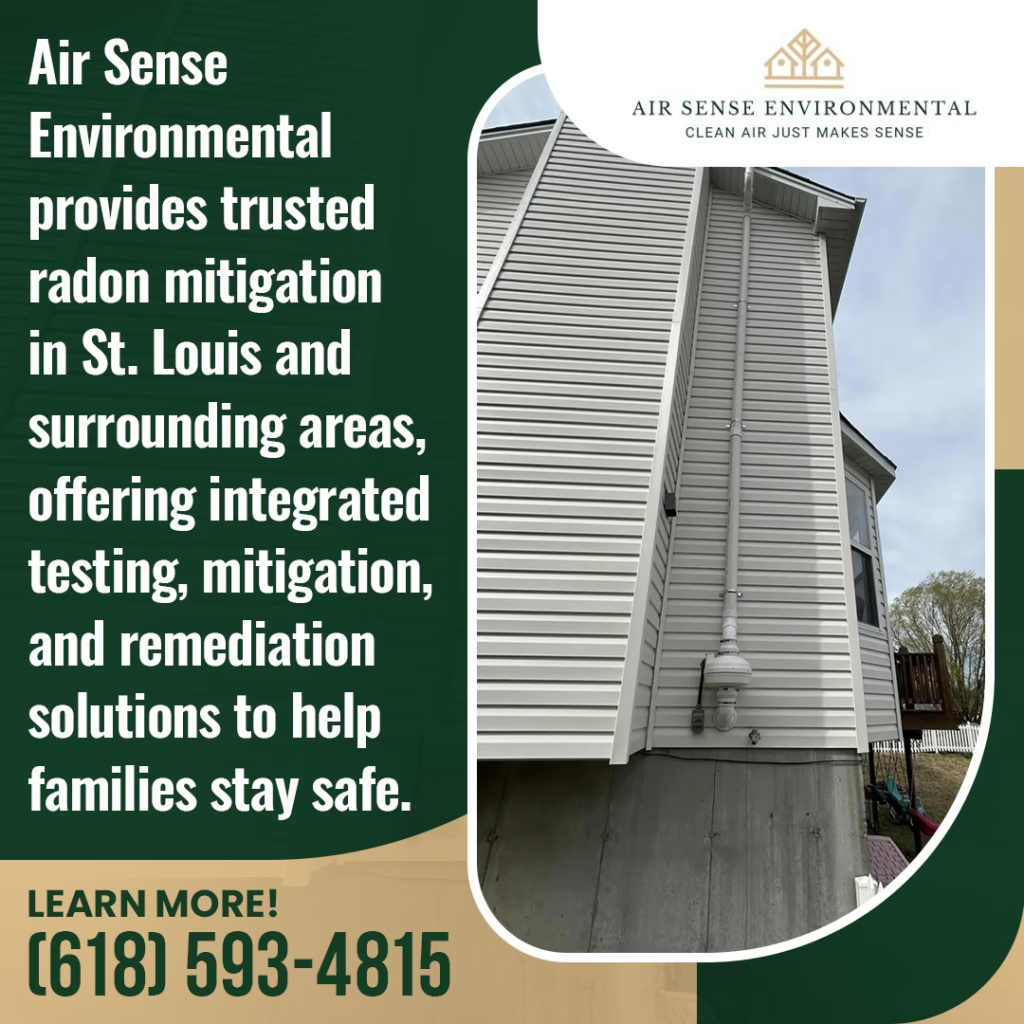
Protect What Matters Most: Your Child’s Health
Shielding children from the dangers of radon starts with awareness and action. By understanding the risks and addressing them early, you can create a healthier, safer home environment. At Air Sense Environmental, we’re committed to helping families throughout the St. Louis area stay protected through accurate radon testing and trusted radon mitigation solutions tailored to local needs. We proudly hold a 5.0 Star rating as a top-rated radon contractor, verified by Trustindex, emphasizing our commitment to delivering exceptional service and ensuring the health and safety of families in the St. Louis area.
Don’t leave your family’s health to chance. Contact us today to schedule a consultation or learn more about our services:
Phone: (618) 593-4815
E-mail: [email protected]
Together, let’s make your home a safer place for the people who matter most.
